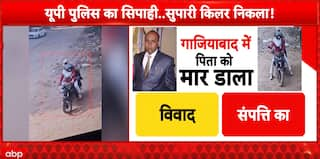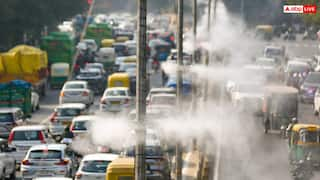Explorer
After demonetisation, will it be lower taxes?

Since his return from Japan in the second week of November, most rallies where Prime Minister Narendra Modi has spoken about demonetisation were solo performances with no other political heavyweight on the dais.
But in Maharashtra on Saturday he shared the stage with politicians like Sharad Pawar, Uddhav Thackeray and Nitin Gadkari. As an ardent political observer, one closely watched the expression on the faces of these formidable netas as Modi talked of his war against black money. From what one could see on television, all of them looked perfectly at peace and heard him without even twitching an eye.
The crowds were enthralled and cheered after each pause of the Prime Minister as he spelt doom for the dishonest and corrupt. Though many may argue that the public reaction was orchestrated like canned laughter in a TV comedy show this writer for one does not believe they were applauding on a cue. And, whatever it might have been, they most definitely did not seem to be bothered about the honesty index of the politicians present.
This in a way captures the dichotomy of the common man’s view on Demonetisation.
Since November 8, one has travelled through more than 10 States across India from North to South in the course of work -- a good part of which was through rural areas. In the last three weeks, there is an element of fatigue setting in but one is yet to come across anyone in the lower economic strata, be it in urban, semi-urban or rural areas, who is disgruntled or disenchanted with the move. The universal response is still overwhelmingly in support of Demonetisation as people are convinced it is for the good of the country.
Among the regions one has covered, the worst affected have been the villages of Uttar Pradesh and Bihar – which probably have the poorest banking infrastructure. Relatively, Madhya Pradesh, Rajasthan, Gujarat and Tamil Nadu have made faster and better transition to cashless and “white” (or Number 1 account as it is called in popular parlance) transactions.
Contrary to popular belief the general drop in business has been to the tune of 20 per cent for most sectors and nowhere close to 50 per cent as suggested by many. One has not observed any “made for the camera” dumping of perishable produce or sharp drop in prices of vegetables, poultry, meat and fish. Business like fast-moving consumer goods have seen a rapid conversion towards small (low unit price) packs, while consumer durables were in any case mostly sold against credit cards.
Apart from e-wallets, POS machines and cheques – traders have made their own innovations. A building materials store in a small tehsil town south of Indore – has engaged shop boys who accompany customers to the bank to help them make payments by NEFT, as cheques take longer time to realise and sometimes bounce for technical reasons like signatures not matching.
For the “aam aadmi” who are used to seeing many ups and downs in the economy – whether due to the vagaries of nature or other man-made dislocations like strikes, blockades and riots – a 20 per cent variation is generally par for the course.
If labourers were not receiving payments, as alleged, much of it was because contractors were using their accounts to exchange old notes for new. Now, with more Rs 2000 (and even Rs 500) notes in circulation – they are no longer as tight-fisted in parting with hoarded crisp currency. As even Rs 100 and Rs 50 notes are more freely available, rarely one is faced with the predicament of a shopkeeper; restaurant or cab driver not having change for Rs 2,000.
The real barometer of the situation is not queues outside ATMs but business picking up. There are already green-shoots visible as overall money supply increases and banking transactions begin to ease. People cannot indefinitely postpone purchases and the pent-up demand is bound to be released sooner than later.
It is because of this ground reality – all of Rahul Gandhi’s rhetoric and carefully crafted one-liners are failing to resonate with the masses. They are still willing to give the Prime Minister the benefit of doubt on the objective of demonetisation – even as eminent economists argue about its flawed premises and faulty implementation.
But, the Rs 14,000 crore question remains – who are the “corrupt” to be brought to book by this mega-move of PM Modi? Certainly not the politicians, who barring a few notable exceptions, appear to have taken demonetisation in their stride. As per most accounts large businessmen also do not II to be overly concerned.
So, one will have to keep looking for the proverbial elephant in the room or the mythical Himalayan Yeti – who could well turn out to be the common man.
They will help the government to enlarge the tax net that the vast majority have been evading so long by paying in cash without bills.
The Prime Minister can then think of repaying them in kind by lowering tax and interest rates besides enhancing the social security cover for ordinary citizens.
Disclaimer: The opinions, beliefs and views expressed by the various authors and forum participants on this website are personal and do not reflect the opinions, beliefs and views of ABP News Network Pvt Ltd.
Follow Blog News on ABP Live for more latest stories and trending topics. Watch breaking news and top headlines online on ABP News LIVE TV
View More


























